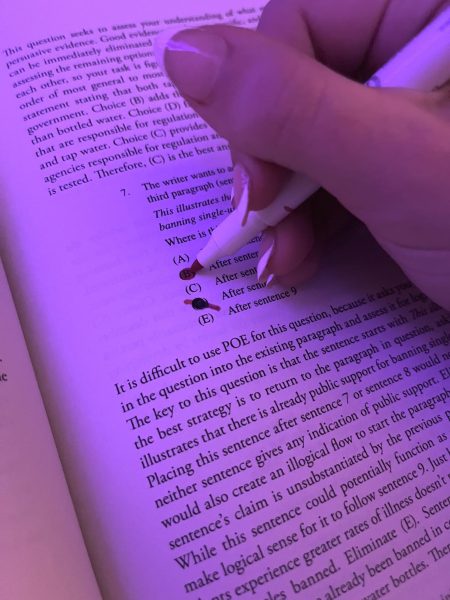The “Return to Normalcy” and Its Effect on Mental Health

Two Yorba Linda High School students attend OC Fair, a popular event many students attend. OC Fair was closed in 2020, but it reopened in the summer of 2021.
September 24, 2021
After more than a year of isolation and quarantine, life is slowly starting to feel normal again. This summer, amusement parks were open, concerts started coming back, social distancing and masks became less enforced, and people started spending more time with their friends and family. Also, the 2021-2022 school year is looking normal again with full in-person instruction, regular athletic seasons, and a multitude of other extracurricular activities taking place. With all these aspects of our “normal” lives making a reemergence after being taken away from us for more than a year, many people’s mental health and well-being is being positively impacted, but it is also introducing a sudden change which could be stressful.
Isolation was a huge negative of the past couple of years, and Lynn Dolce, the CEO of Edgewood Center for Children and Families in San Francisco, explains that “kids who were really suffering are kids who were extremely isolated, no sports, no activities, no peers” (abc7news.com). Since the beginning of human existence, connection and socialization has been a vital part of human lives. According to a 2011 study from the journal Nature, “primate ancestors of humans” started socializing with others when they switched to hunting at the day time and had to work together to avoid predators in the wild and make tools. In addition, Susan Piker, a psychologist from UC Davis, stated that “direct person-to-person contact” releases an important neurotransmitter that responds to stress and anxiety (medicalnewstoday.com). Therefore, these actions from our ancestors caused us to be social creatures and need interaction to help with stress and anxiety.
summer was much more exciting because more places were open — Jacqueline Sumaya (12)
With more places beginning to open throughout summer and a lessened fear of being with others, this summer, for many people, has been the closest thing to normal during the entire pandemic and drastically improved their mental health. People got to have reunions with their family, play sports again, hang out with their friends, and a variety of other things that were taken away from them due to the pandemic. Jacqueline Sumaya (12) thought her “summer was much more exciting because more places were open,” and overall, she was “happier” than the prior summer because of the ability to “hang out with [her] friends more often.” She recalled going to Hawaii with her family over the summer, and she said “it was so fun to get to do things that [she] was not able to during the summer of 2020.”
Additionally, in-person learning can improve the mental health of students. The American Academy of Pediatrics states that “children get much more than academics at school. They also learn social and emotional skills at school, get healthy meals and exercise, mental health support and other services that cannot be easily replicated online” (kipptexas.org). Since a large number of students decided to not come back to in-person learning during the 2020-2021 school year, these past few weeks have been the first in-person schooling many students have experienced for more than a year. Students now get to hang out with their friends everyday, participate in extracurricular school activities, and be able to do the things they enjoyed before online schooling occurred.
sudden change of going back [to normal] all of a sudden after being locked in our houses for so long was a bit overwhelming — Molly Polomsky (12)
Conversely, some people believe that the return to normal everyday life could potentially lead to an increase in stress. Karestan Koenen, a Harvard professor of psychiatric epidemiology, explains that with the wide array of changes that the pandemic caused, such as new work policies, increased obligations in the household, and different commutes to work, “all [this] change can cause a sense of dislocation.” Also, she believes that “students who have been mostly remote will have a more difficult transition to the classroom this fall,” and she recommends teachers to offer help to students who are “having trouble readjusting” (news.harvard.edu). Likewise, Molly Polomsky (12) thinks that the “sudden change of going back [to normal] all of a sudden after being locked in our houses for so long was a bit overwhelming.” She adds that the “consistent new changes can take a toll as you have to constantly adjust to normal life.”
With the variety of positive effects of returning to normal, there are some negative effects. If you are having a hard time adjusting to the fast pace of “normal” life, meditating daily, being out in nature, eating well, getting around 7 hours of sleep, and exercising are some proven methods to lower stress levels (nationalgeographic.com). As we look forward to a new, exciting, and “normal” school year, it is important for students to take care of their mental health.










































